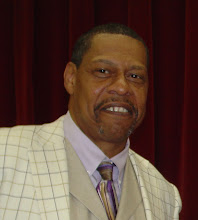And let us not grow weary while doing good,
for in due season we shall reap if we do not lose heart
Galatians 6:9
WASHINGTON (AP) -- The Supreme Court on Thursday rejected diversity plans in two major school districts that take race into account in assigning students but left the door open for using race in limited circumstances.
The decision in cases affecting schools in Louisville, Ky., and Seattle could imperil similar plans in hundreds of districts nationwide, and it further restricts how public school systems may attain racial diversity.
The court split, 5-4, with Chief Justice John Roberts announcing the court's judgment. The court's four liberal justices dissented. Federal appeals courts had upheld both plans after some parents sued. The Bush administration the parents' side, arguing that racial diversity is a noble goal but can be sought only through race-neutral means.[1]
With its latest decision on school desegregation the Supreme Court has once again rejected the concept of diversity in public education. We are steadily reviving the concept of separate, but equal. Despite the Supreme Court’s ruling and the opinion of many White Americans, we have yet to overcome discrimination in this country. If we agree that there is still discrimination and yet we choose to do nothing about it, what does that say about how we really feel about discrimination?
To acknowledge the obvious requires no courage, but to stand on the side of right with action and sacrifice is another story. Let’s face it there is no easy answer to the race problems we face as a nation, but what bothers me the most is that in order for this country to become what it is today millions of Black men and women had to make a sacrifice unwillingly through slavery. Now that a sacrifice is needed from those who have benefitted from the previous sacrifice is required, we want to hide behind “reverse discrimination”. We want to say all things can now be equal; ignoring the past will not bring justice. Confronting it, acknowledging it, and making changes is how the past is remedied.
Can someone explain to me how you can repair racial discrimination without taking into account race in its mending? Did I miss the class where we learned how to fix gender discrimination without using gender? Does anyone remember the remedy for Title IX, for those who don’t remember let me give you some figures to chew on.
In 1972, Congress enacted Title IX, the law that prohibits sex discrimination in education. In the 25 years since its passage, Title IX has helped women and girls make strides in gaining access to higher education, athletics, and nontraditional fields of study.
In 1972 women made up 44 percent of undergraduates; today women are 55 percent.
In 1971 girls made up 1% of high school varsity athletes; today they make up 40%.
Until Title IX, many high schools prohibited girls from taking certain courses, such as auto mechanics and criminal justice.
In 1970 women earned 0.7% of bachelor's degrees in engineering; in 1994 women earned 14.8% of these degrees.
In 1970 women earned 7.1 percent of law degrees and 9.1 percent of medical degrees; in 1994 women earned 43 percent and 38 percent of degrees in those fields.[2]
A conscious effort was made to give women preference in athletics to make up for past discriminatory practices and we can see the results. There were men who screamed “reverse discrimination”, but the country stuck to its guns, because it was the right thing to do. The justices talked about diversity being an admirable goal, but talk is cheap without the tools to carry it out.
Louisville's schools spent 25 years under a court order to eliminate the effects of state-sponsored segregation. After a federal judge freed the Jefferson County, Ky., school board, which encompasses Louisville, from his supervision, the board decided to keep much of the court-ordered plan in place to prevent schools from re-segregating.
The lawyer for the Louisville system called the plan a success story that enjoys broad community support, including among parents of white and black students.
Attorney Teddy Gordon, who argued that the Louisville system's plan was discriminatory, said, ''Clearly, we need better race-neutral alternatives. Instead of spending zillions of dollars around the country to place a black child next to a white child, let's reduce class size. All the schools are equal. We will no longer accept that an African-American majority within a school is unacceptable.''[3]
“We will no longer accept that that an African-American majority within a school is unacceptable”, to me this sounds dangerously close to separate but equal making a comeback. It is unfortunate that we as a nation require these types of remedies to bring us together. It would be preferable for us to just unite and say let’s all live together in equality and harmony, but that is not reality today. It is always easy to give up on doing good; to say, “We’re tired. Aren’t we there yet? Pull yourself up, we quit calling you ni**er, didn’t we?”
[1] http://www.nytimes.com/aponline/us/AP-Scotus-Schools-Race.html?hp
[2] http://www.nncc.org/Release/title9.html
[3] http://www.nytimes.com/aponline/us/AP-Scotus-Schools-Race.html?hp







 Stumble It!
Stumble It!